Art World
Fourth Plinth Finalists Unveiled, With Subjects Ranging From Ice Cream to ISIS
Two winners will be selected, for 2018 and 2020.
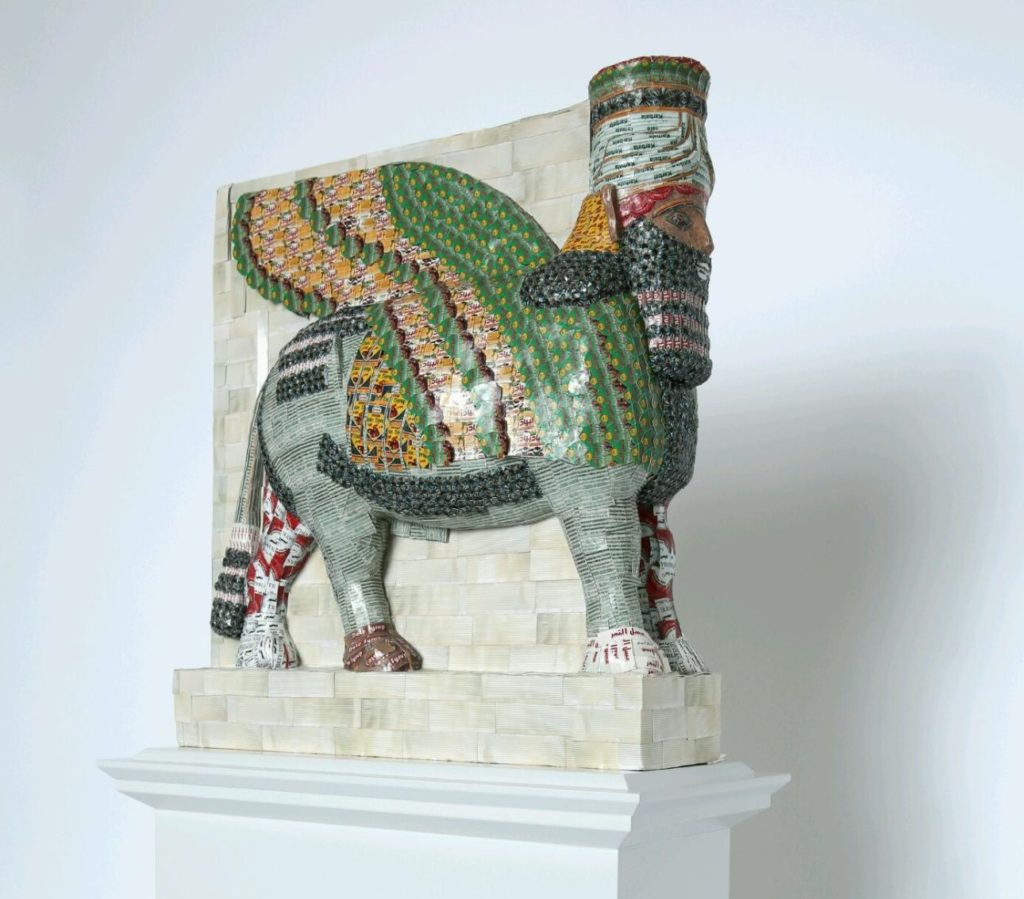
Two winners will be selected, for 2018 and 2020.

Brian Boucher

Four artists and one collective have been tapped as finalists for one of England’s most visible public art commissions, the Fourth Plinth, in Trafalgar Square.
The finalists are: Huma Bhabha, Damián Ortega, Heather Phillipson, Michael Rakowitz, and Raqs Media Collective; two winners, whose works will be installed in 2018 and 2020 respectively, will be named in March 2017.
The proposed sculptures range in subject and tone from a work that playfully stacks a truck, a scaffold, and a ladder to a recreation of a sculpture destroyed by ISIS. If you’re in London, you can get a close-up look yourself; they are on display at the National Gallery until March 26.
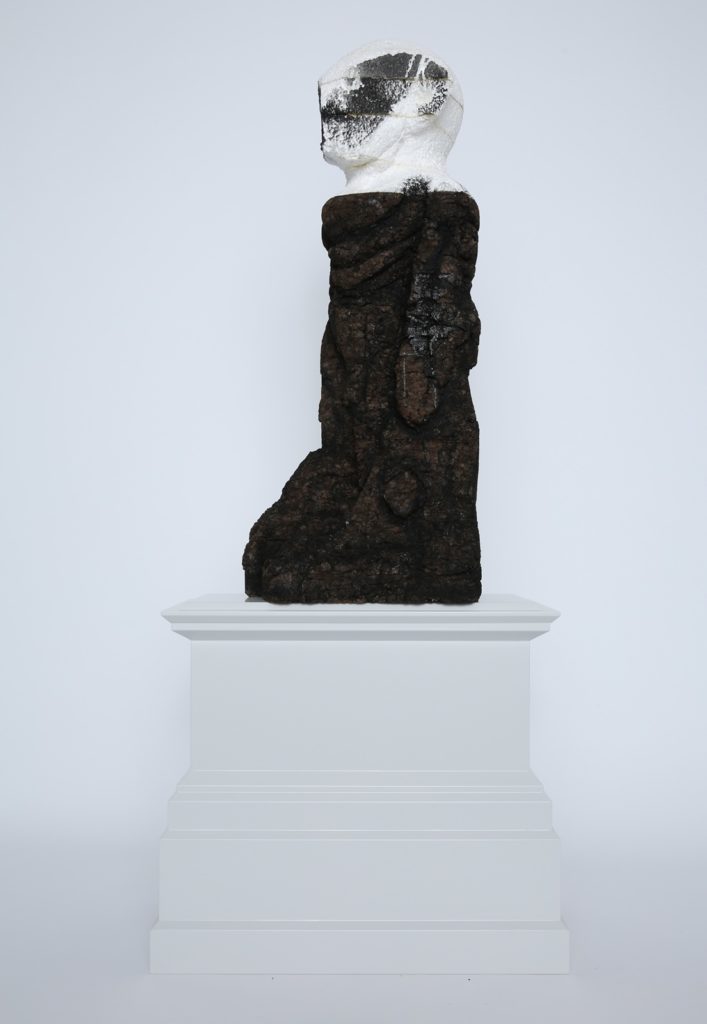
Huma Bhabha, Untitled, 2016. Photo James O. Jenkins, courtesy the artist.
Bhabha, a Pakistani sculptor who lives in the Hudson River Valley, offers an untitled sculpture that takes the form of her trademark rough-hewn figurative sculptures; its impressive scale, say the organizers, “[reflects] a modern comic sci-fi movie.” The Mexican Ortega’s High Way jams together a truck, oil cans, and a construction scaffold.
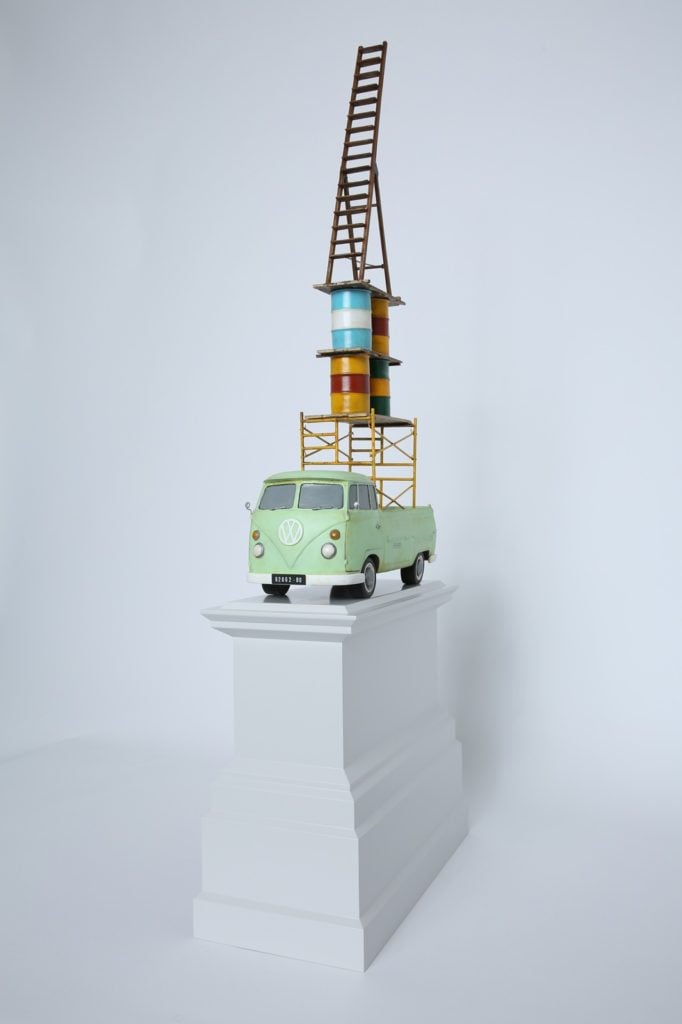
Damián Ortega, High Way, 2016. Photo courtesy James O. Jenkins, courtesy the artist.
London-born Phillipson’s proposed work, THE END, meanwhile, shows a swirl of vanilla ice cream, topped by a cherry, which has attracted a fly and a drone that are, mysteriously, about the same size. The organizers’ slightly inscrutable description says that it “explores the extremes of shared experience, from commemorations and celebrations to mass protests.”
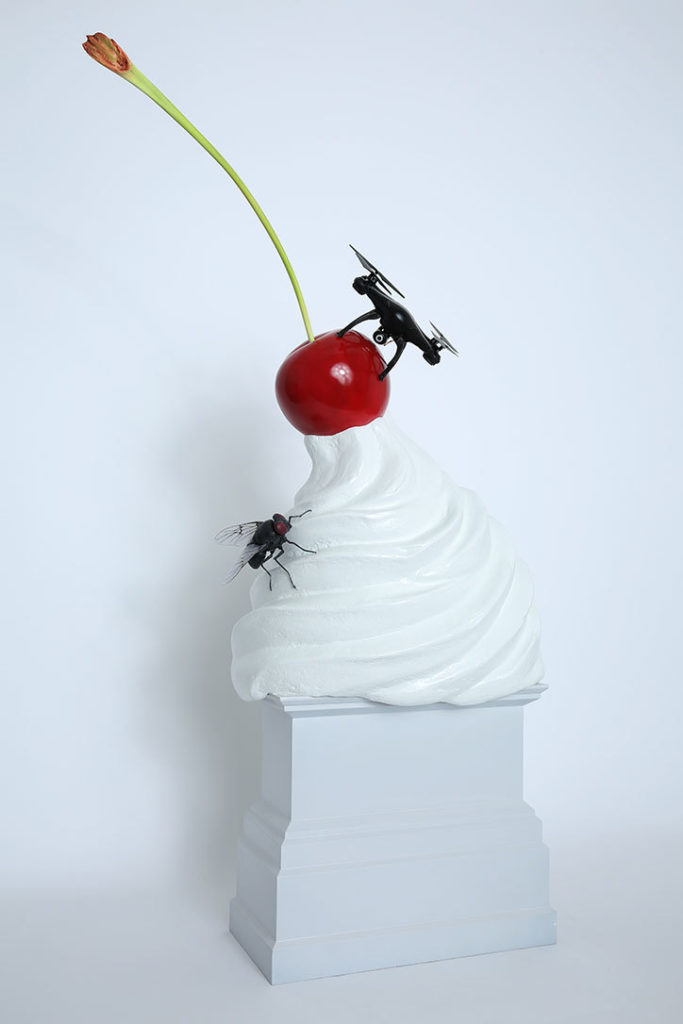
Heather Phillipson, THE END, 2016. Photo James O. Jenkins, courtesy the artist.
The Chicago-based Rakowitz’s proposal, The Invisible Enemy Should Not Exist, is a recreation of an Assyrian sculpture of a protective deity in the form of a winged creature called the Lamassu that fell victim to ISIS’s program of destruction of ancient art and archaeological sites.
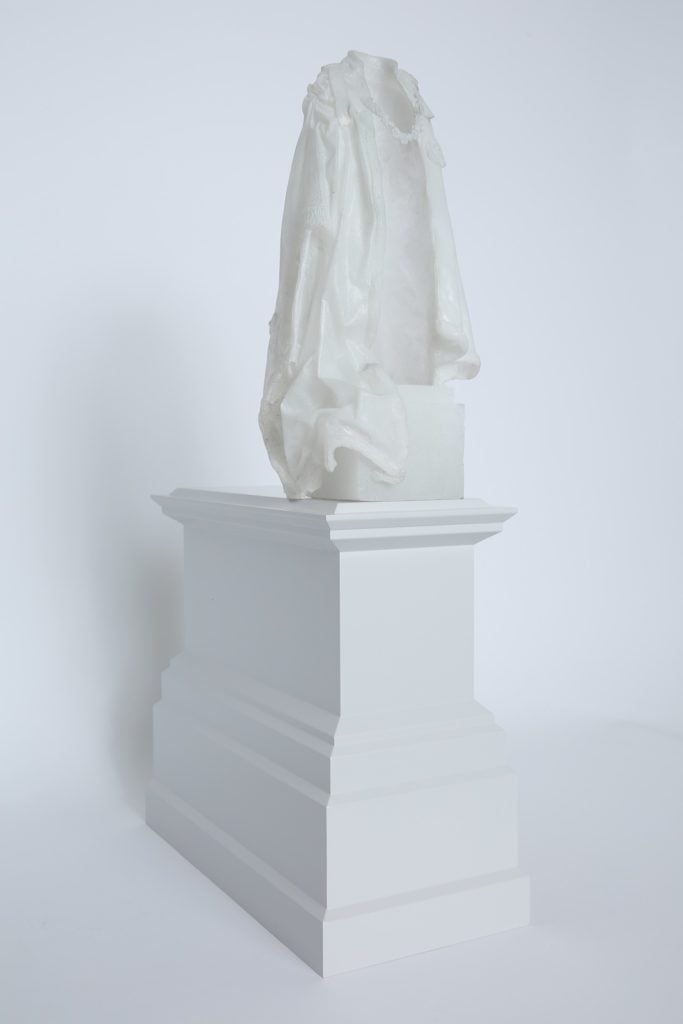
Raqs Media Collective, The Emperor’s New Clothes, 2016. Photo James O. Jenkins, courtesy the artist.
The Emperor’s New Clothes, by Raqs Media Collective, a Delhi-based trio (Jeebesh Bagchi, Monica Narula, and Shuddhabrata Sengupta), shows a hollowed out figure in the form of a classic public artwork, and “explores how power can be both present and absent in sculpture,” says the mayor’s office.
Past winners form an international roster of high-profile artists, including Elmgreen and Dragset, Hans Haacke, and Yinka Shonibare. (Katharina Fritsch and Rachel Whiteread are the only two women to receive the commission among its 12 winners.)
The competition is overseen by London Mayor Sadiq Khan, and the 10-member commissioning group includes Iwona Blazwick, Whitechapel Gallery director; the artist Jeremy Deller; and Matthew Slotover, co-director of the Frieze art fair and co-founder of Frieze magazine.
“The variety of the exciting proposals unveiled today demonstrates the way in which artists react so differently to Trafalgar Square,” Khan said in announcing the finalists. “I’m delighted to see that the shortlisted commissions are not just from the UK but from around the globe, a clear sign that London is open to creativity.”
Lively public discussion, including abundant commentary in the British press, always greets the commissions. The most recent, a giant hand giving the thumbs-up by British artist David Shrigley, was dubbed a “fabulously feel-bad” work that offered a “sly parody of the emptiness of public art” by the Guardian‘s Jonathan Jones, while the Telegraph‘s Mark Hudson labeled it “an inscrutable smirk of a sculpture.”
Ekow Eshun, chair of the Fourth Plinth commissioning group, said, “Debate is at the heart of the program, and the commissioning group looks forward to hearing the public’s thoughts on the proposals.”